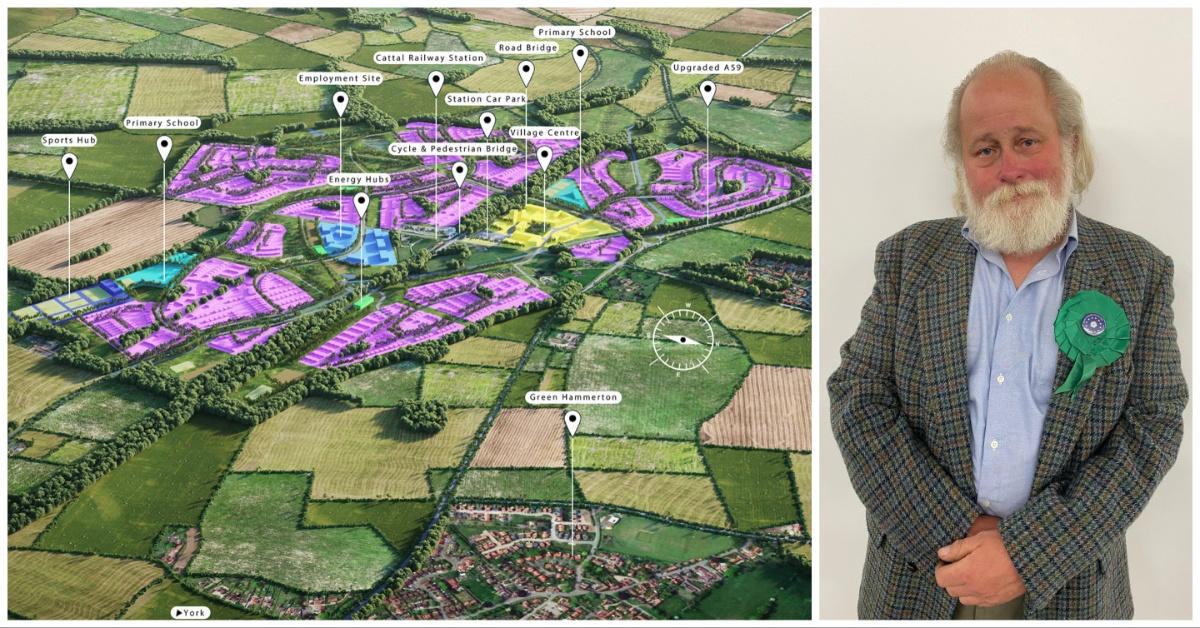Subscribe to trusted local news
In a time of both misinformation and too much information, quality journalism is more crucial than ever. By subscribing, you can help us get the story right.
- Subscription costs less than £1 a week with an annual plan.
Already a subscriber? Log in here.
13
Aug
Maltkiln cannot become ‘countryside housing estate’, councillor warns

A plan to build up to 4,000 homes near Harrogate must not become “a housing estate in the countryside”, a local councillor has warned.
Cllr Arnold Warneken, a Green Party councillor who represents Ouseburn on North Yorkshire Council, said the Maltkiln development needs to justify taking up land in the open countryside.
His comments come as a government-appointed inspector approved a key document relating to the scheme yesterday (August 12).
The development plan document, which sets out a 30-year vision for the settlement and a policy framework on how it will be developed, is separate to a formal planning application.
It includes site boundaries, local transport infrastructure and details of how homes will be built to combat the effects of climate change.
The settlement would be built by developers Caddick Group.
But Cllr Warneken said the council needed to ensure that the policy was enforced now that the government had given the plan its backing.
He said:
The challenge is to make sure that what started as a garden village doesn’t end up as a housing estate in the countryside. It’s got to deliver a high-quality, green place that justifies taking open countryside for major development. Houses need to be well-built, energy efficient and cheap to run.
And it must be set up to create walkable communities that support active travel because the whole reason the location next to the station was selected was to get people out of their cars.
Before we even to talk about houses, we need to ensure a settlement of this size doesn’t put pressure on existing infrastructure such as highways and sewers.
However, Alex Smith, who spoke on behalf of a coalition of parish and town councils during scrutiny hearings over the document, said he felt the decision reflected that policy was “rewritten” to suit the scheme.
He said:
My initial reaction is that the inspector is at least clear on one thing: policy was rewritten to suit a live application.
The changes push building into the green gap meant to keep the settlement distinct, blurring village identity; cram 3,000 houses into one half of the site—most beyond walking distance of the centre—without a secondary school or indoor sports facilities.
In such circumstances there’s a legal duty to show the reasonable alternatives considered, yet none have been evidenced.
Inspector's decision
In his report, Clive Coyne said the development plan document “provides an appropriate basis for the planning of the area”.
If Maltkiln goes ahead as currently envisaged it will transform the area around Cattal, Whixley, Green Hammerton and Kirk Hammerton.
The council said the document “sets a clear and ambitious thirty-year vision” for the scheme.
However, the authority faced criticism during the consultation process with residents claiming its approach to consultation left them “confused” and “in disbelief” with some rural residents struggling with online forms.

The Maltkiln planning inquiry, was held at Harrogate Civic Centre last year. Picture: LDRS.
Some also said the council should have consulted again following the withdrawal of land owned by Benjamin Dent in January 2023, which made up 42% of the overall scheme and surrounds land at Cattal station.
In December 2023, the council resolved to explore the possibility of using compulsory purchase orders for the land as a “last resort” to ensure that Maltkiln is developed as intended.
But, Mr Coyne said in his report that he considered the land a “valid part” of the overall allocation for the scheme as it was possible that it could become available in the future.
He said:
This possible use of compulsory purchase powers means that at some point in the future this land has the potential to become available for development i.e. that it would be developable.
Consequently, I consider that this unavailable land is a valid part of the overall allocation and as such its inclusion within the new settlement remains justified.
That said, as originally envisaged this unavailable land was needed for the early phases of the new settlement’s development. The clear implication from this is that for the new settlement to be delivered, other parcels of land under different ownerships would need to be developed first instead.
The council said steps towards formally adopting the plan will now get underway, with refinements to be made based on the inspector’s modifications.
The final proposals are due to be presented to North Yorkshire councillors at its full council meeting on Wednesday, November 12.
If adopted, the plan will provide the framework for the new community, with each part of the site development still subject to individual planning applications.
1